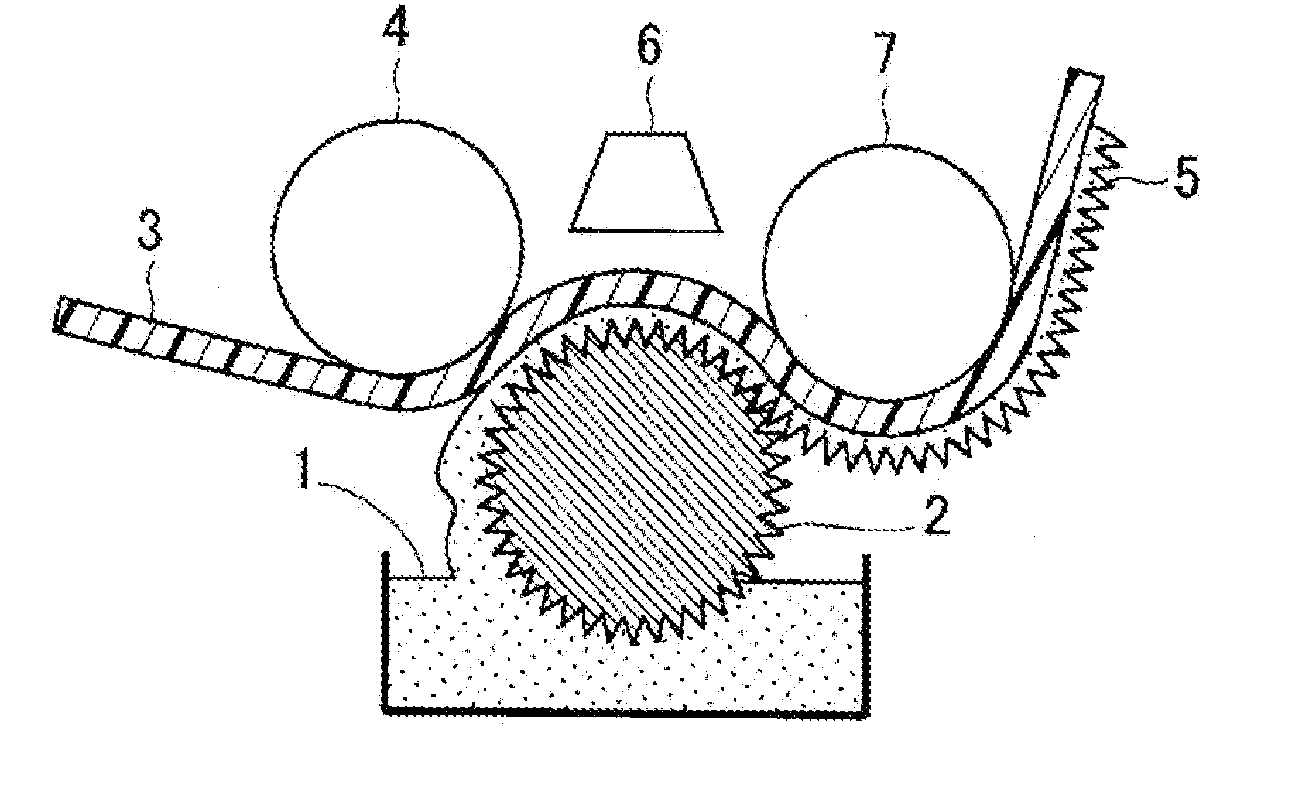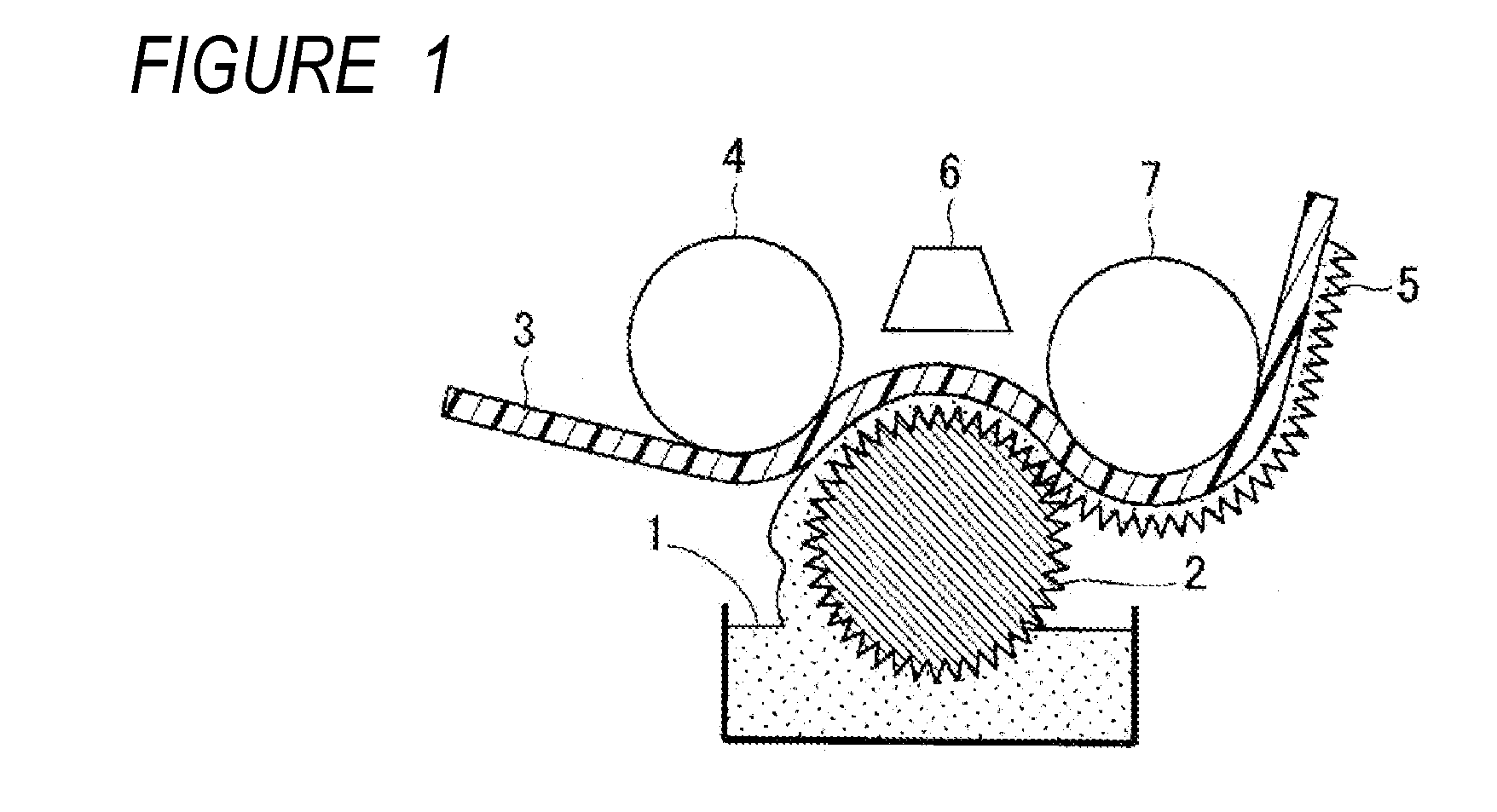Antireflection film, manufacturing method of antireflection film, kit including antireflection film and cleaning cloth
a technology of anti-reflection film and manufacturing method, which is applied in the direction of carpet cleaners, cleaning equipment, instruments, etc., can solve the problems of affecting visibility and the provision of water-repellent anti-fouling properties to the anti-reflection film having a moth-eye structure on the surface thereof, and achieve excellent anti-fouling properties
- Summary
- Abstract
- Description
- Claims
- Application Information
AI Technical Summary
Benefits of technology
Problems solved by technology
Method used
Image
Examples
example 1
Manufacturing of an Antireflection Film Having a Moth-Eye Structure
[0275]Polyethylene glycol diacrylate (a) (53 g) when m=24 (m represents the number of repeating units of ethyleneglycol) in “polyethylene glycol diacrylate represented by Formula (2) below” included in Formula (1) above, urethane acrylate (a) (40 g) represented by Formula (a) below, which is obtained by bonding isophoronediisocyanate to two dipentaerythritolpentaacrylates, 1-hydroxycyclohexyl phenyl ketone (5 g) as for a photopolymerization initiator, and IPA-ST (3 g) as an improving agent for adhesion to an antifouling layer were sufficiently stirred and mixed to obtain a curable composition A-1.
[0276]Meanwhile, the solvent in the dispersion of fine particles was evaporated at a room temperature until the concentration in a curable composition becomes 0.5% by mass or less. The amount of the fine particles in Table 1 represents parts by mass of a non-volatile content excluding the solvent.
[0277]In Formula (2), m repr...
example 2
[0342]An appropriate of the curable composition A-1 in Example 1 above was collected and applied onto a triacetyl cellulose film (TD60UL, manufactured by Fujifilm Corporation) by a bar coater NO28 to have a uniform film thickness. Thereafter, a mold having a structure in which convex portions having an average height of 205 nm had been arranged with an average cycle of 180 nm on the surface thereof was bonded thereto. Confirming that the entire mold was bonded to the curable composition, the composition was polymerized by irradiating ultraviolet rays at 400 mJ / cm2 using an UV irradiation device manufactured by Fusion Inc., and the mold was released to produce a moth-eye layer substrate film which has a moth-eye structure at an aspect ratio of 1.1 in which convex portions having an average height of 193 nm have an average cycle of 175 nm.
[0343]The reaction rate of the prepared moth-eye layer substrate film was 50%.
[0344](Formation of Antifouling Layer 2)
[0345]A curable composition C-...
PUM
 Login to View More
Login to View More Abstract
Description
Claims
Application Information
 Login to View More
Login to View More - R&D
- Intellectual Property
- Life Sciences
- Materials
- Tech Scout
- Unparalleled Data Quality
- Higher Quality Content
- 60% Fewer Hallucinations
Browse by: Latest US Patents, China's latest patents, Technical Efficacy Thesaurus, Application Domain, Technology Topic, Popular Technical Reports.
© 2025 PatSnap. All rights reserved.Legal|Privacy policy|Modern Slavery Act Transparency Statement|Sitemap|About US| Contact US: help@patsnap.com



